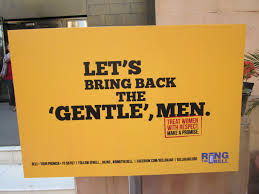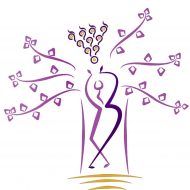 Domestic violence a reality behind closed door,
Domestic violence a reality behind closed door,
This is roughly the content of the talk I presented at jamat Islamia in2006, after which the floor was open to discussion and the sharing and trouble shooting options were amazing. Domestic violence exists across the global, across social and economic sectors and religious and cultural communities.
The Hindu of Sept.23rd 2004, reported that a woman in Teheran went to the court asking the law to intervene so that her husband beats her only once a week instead of daily. The court directed that he stops beating her totally.
Of course we did have debates and whatever we choose to call the ineffective way of dealing with this, it was the Jamat Islamia of Mapuca that took a stand and they had a meet on Dec.5th 2006 the agenda was clear, that the domestic violence had to be addressed. That was when I really looked up the information that I had vaguely put together.
In 1993 I set up a practise in town, it was a busy practise and the standard 10am to 7pm one, the early morning patients would be mostly women, interestingly there were men too, swelling of the cheek, bleeding into the mouth many times but teeth intact as a doctor I would ask them
“did you fall?”
The reply would be “Yes” mostly I would send them off to the dental college. About how women drunks, would stumble and hurt themselves.
Five years later I shifted the practise to my house, the patients with broken front tooth, cheek swelling increased and they would land up anytime between 11pm and 3am, absolutely sober, but with drunken spouses, that is in when I put the 2 and 2 together to realize that I was looking at domestic violence,, well of course the standard excuse given is drunkenness,
 But why does this violence occur at all?
But why does this violence occur at all?
This is usually a controlling behaviour that is aimed at gaining power over an intimate partner; it is cyclic in pattern and includes psychological, sexual and physical abuse. Though the primary targets are partners it could also extend to children and other family members.
The definition of domestic violence “physical, verbal, visual or sexual abuse that is experienced by a woman or girl as threats invasion or assaults that have the effect of hurting her or degrading her and taking away her ability to control contact.”
Violence against women have its roots in unequal social structures and it further intensified by social and economic inequalities, that are brought by increasing globalization and privatization. Which essentially reflects an underlying insecurity and feeling of loss of power.
The great glory of motherhood, is very much a part of the Indian culture and motherhood is rather equated to the all sacrificing sainthood worldwide, but in practise women are awarded very little respect. Today we about selective abortions, dowry deaths, rapes, sexual abuse and honour killing.
This on one platform talks of the incomplete transition of the society,
I have heard many voices ask like I did—why don’t the women leave?
- Personal safety is the primary concern, the perpetrator threatens the women, other family members and children. This fear holds the person randsom.
- Lack of financial empowerment
- Religious, cultural and social pressure.
Domestic violence or intimate partner violence definitely impacts individual families and communities. Majority of the hospital emergency are either road pops or domestic violence’s. The intensity of theses violence’s could range from a mild push, or slap, single incident to repeated severe beating leading to injury and fatality.
With domestic violence external help becomes essential long side with direct action from the recipient of the violence it could be anything like police intervention, leaving the relationship etc.
Domestic violence appears to be most commonly committed by men against women, but it could be either, in some cases both way, men being bigger and stronger display aggression physically with women it is more subtle. There is the context of controlling, emotionally abusive, controlling finances, isolating the victim, making threats and verbal abuse. There is usually a predictable cycle.
- Tension – arguments and threats in the relationship escalate
- Act of violence that gets more and more severe over time
- Honeymoon phase where the couple reunite, have intense closeness, and the blame game with the victim accepting the blame particularly in the early stage of the relationship.
One way to effectively get out is to get help from a domestic violency agency or an experienced therapist who could provide safety plans and other measures to protect all parties from harm.
Counselling couples is not generally appropriate when violence is present in a relationship, particularly if it is chronic, or severe, as the violent partner does not fully understand the unacceptability of their behaviour. Counselling and therapy opens communication but communication can be dangerous in a violent relationship. For a relationship to work there exists an requirement of mutual respect which is absent in the presence of violence and it becomes a power and control issue. Until the violent partner is able to handle and address the abusive behaviour therapy sessions could only be more harmful.
Therapy could be a powerful tool to facilitate healing though. People who have been through domestic violence particularly children carry the scars of the trauma and it manifests through unsteady jobs, troubled relationships, and unhealthy behaviour. Once this is addressed instead of being avoided the survivor can let go of the self blame, and understand their role in the situation. This helps them to see themselves in a new light. The acknowledgement that they were victims and not perpetrator relieves them of the struggle with self esteem, abandonment, fear.
Domestic violence perpetrators tend to get diagnosed with intermittent explosive disorder, antisocial personality or narcissistic personality and have a greater tendency to drug or alcohol abuse along with an underlying depression. Many of these individuals were victims of abuse or neglect as children. This becomes a medical concern as it domestic violence recipients often meet criteria for dependent personality, depression, and anxiety causing physical and mental health problems. Persistent physical abuse can effect well-being and ability to accomplish what seem as easy and daily tasks
I had one patient who attempted suicide because of ringing the bell. If there are socially aware people who know and accept domestic violence as abusive, most of the society looks at it as normal, and acceptable, what probably is required is education, and addressing the underlying issue of anger, inadequacy and insecurity in the perpetrator and building self-esteem and courage in the victim.
